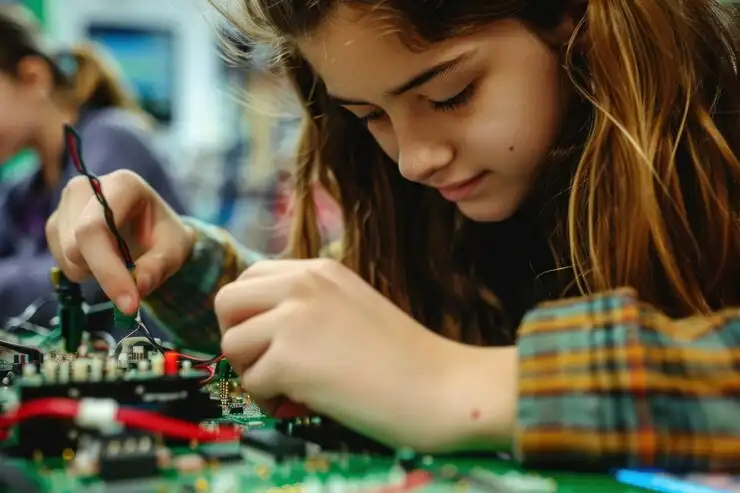
Blog
An Introduction to Circuit Design Understanding

Many of the electronic gadgets we use on a daily basis, such as computers, cellphones, home appliances, and automobile systems, are built on circuit design. Anyone interested in electronics or engineering should learn the fundamentals of circuit design, even though it may appear complicated at first. We will go over the basic ideas of circuit design and provide you an understanding of how circuits operate in this beginners guide..
A Circuit: What Is It?.
A closed loop with electric current flowing through it is called a circuit. It is made up of different parts connected by conductive wires or traces on a circuit board, including resistors, capacitors, inductors, and semiconductor devices like diodes and transistors. Almost all electrical devices have circuits, which regulate the flow of electricity to carry out certain tasks.
Essential Elements of a Circuit.
1. Power Source: The power source, which is typically an electrical outlet or a battery, supplies the voltage required to run the circuit
2. Resistor: Resistors are parts that restrict how much current may pass through a circuit. They are frequently employed to regulate signal levels, safeguard components, and control voltage levels
3. Capacitor: An electric field is produced when a capacitor stores and releases electrical energy. In circuits, they are employed for timing, decoupling, and filtering
4. Inductor: Inductors resist changes in current flow and store energy in the form of a magnetic field. They are frequently found in oscillators, filters, and power supply
5. Diode: A diode is a device that permits current to flow in one direction while obstructing it in another. They are employed in signal demodulation, voltage regulation, and rectification
6. Transistor: Electrical signals can be switched or amplified by transistors, which are semiconductor devices. They serve as the basic components of both analog and digital circuits
Simple Circuit Layouts.
1. Series Circuit: A single path for current flow is formed when components in a series circuit are connected end to end. The sum of the individual resistances in a series circuit is the overall resistance
2. Parallel Circuit: Multiple pathways for current flow are provided by connecting components across common points in a parallel circuit. In a parallel circuit, the overall resistance is smaller than the minimum value of each individual resistance
3. Combination Circuit: Parallel and series connections make up a combination circuit. In intricate circuits, they are employed to meet precise voltage and current requirements
Comprehending Circuit Diagrams.
Circuit diagrams are graphical depictions of circuits that show connections and components using standardized symbols. It takes comprehension of circuit diagrams to properly analyze and construct electrical circuits. Lines that represent wires, resistors, capacitors, inductors, diodes, transistors, and power sources are common symbols.
Uses of Circuit Design in Real-World Applications.
Numerous fields find use for circuit design, including:
• Consumer electronics: including televisions, computers, and smartphones.
• Automotive Systems: infotainment, sensors, and engine control units.
• Industrial Automation: motor drives, sensors, and programmable logic controllers (PLCs).
• Renewable Energy: battery management systems, wind turbines, and solar panels.
• Medical Devices: diagnostic tools, imaging systems, and patient monitoring.
In summary.
Anyone interested in technology, engineering, or electronics has to understand circuit design. Beginners can learn how electronic devices work and even create their own circuits by understanding the core ideas behind circuits, basic components, configurations, and circuit diagrams. For anybody interested in electronics, be it enthusiasts, learners, or future engineers, the fundamentals of circuit design offer a strong basis for delving into the captivating realm of electronics.
4 Comments
Leave a Reply














Noah
Thanks for the fantastic ideas!
James
Thanks for the great tips overall.
Charles
Keep up the great work!.
Marie Johnson
Thank you for the detailed tutorial and creative ideas!